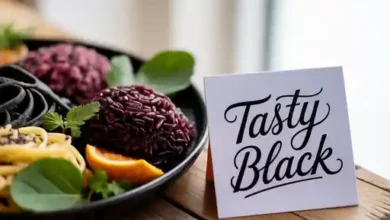Chinatown Hawker Leftovers Consumption: A Sustainable Tradition in Urban Food Culture

In the bustling streets of Chinatown, hawker centers serve as vibrant hubs where diverse culinary traditions converge. These open-air food courts, renowned for their affordability and variety, are not only a testament to the rich cultural tapestry of the region but also play a pivotal role in addressing contemporary challenges such as food waste and sustainability. One notable practice gaining traction is the consumption of hawker leftovers—a tradition that intertwines community values with environmental consciousness. This article explores the multifaceted aspects of Chinatown hawker leftovers consumption, shedding light on its cultural roots, economic implications, and the innovative strategies employed to repurpose surplus food.
Cultural Significance and Community Values
The practice of consuming leftovers in Chinatown hawker centers is deeply rooted in cultural values of sharing and community support. In many Asian cultures, food is not merely sustenance but a medium for fostering connections and expressing care. The act of sharing meals, including leftovers, reflects a communal spirit that transcends individual consumption. This ethos is evident in the collaborative efforts of hawkers and patrons to minimize food waste and support those in need.
For instance, numerous hawker stalls have established partnerships with local charities and food banks, donating unsold but safe-to-eat food to assist low-income families and individuals facing food insecurity.
Environmental Impact and Sustainability
Food waste poses a significant environmental challenge, contributing to greenhouse gas emissions and resource depletion. In urban settings like Chinatown, where food production and consumption are concentrated, the environmental footprint of discarded food is particularly pronounced. By embracing leftovers consumption, hawker centers play a crucial role in mitigating these impacts.
Repurposing surplus food into new dishes or donating it to those in need reduces the amount of waste sent to landfills, thereby decreasing methane emissions—a potent greenhouse gas. Moreover, this practice conserves valuable resources such as water, energy, and labor, which are otherwise expended in the production and disposal of food.
Economic Implications and Vendor Practices
For hawker vendors, managing food waste is not only an ethical consideration but also an economic imperative. Unsold food represents a direct financial loss, impacting the profitability of small-scale food businesses operating on tight margins. To address this, many hawkers have adopted innovative strategies to repurpose leftovers and minimize waste.
Common practices include transforming leftover rice into fried rice, incorporating unsold vegetables into soups or stir-fries, and utilizing excess meats in curries or stews. These creative approaches not only reduce waste but also offer customers affordable meal options, enhancing customer satisfaction and loyalty.
Innovative Solutions and Technological Integration
Advancements in technology have facilitated the development of platforms that connect hawker vendors with consumers interested in purchasing or receiving leftover food. Applications such as Treatsure and OLIO enable users to find and acquire unsold meals at discounted prices, promoting the redistribution of surplus food within the community. These platforms empower consumers to make environmentally conscious choices and support local businesses, fostering a culture of sustainability and shared responsibility.
Conclusion
The practice of consuming hawker leftovers in Chinatown is more than a response to food waste; it embodies a cultural commitment to sustainability, community, and shared responsibility. By repurposing surplus food, supporting charitable initiatives, and embracing technological innovations, Chinatown hawker leftovers consumption centers demonstrate how traditional food practices can evolve to address contemporary challenges. As urban centers continue to grapple with issues of food security and environmental sustainability, the Chinatown model offers valuable insights into creating resilient, inclusive, and sustainable food systems.
Frequently Asked Questions (FAQs)
1. What types of food are typically repurposed in Chinatown hawker centers?
Commonly repurposed foods include leftover rice, unsold vegetables, and excess meats. These ingredients are creatively transformed into new dishes such as fried rice, soups, and stews, minimizing waste and offering affordable meal options to customers.
2. How can consumers participate in reducing food waste at hawker centers?
Consumers can contribute by ordering appropriate portion sizes to avoid excess, opting for takeaway containers to finish leftovers at home, and supporting vendors who donate surplus food to charitable organizations. Additionally, using platforms like Treatsure and OLIO allows consumers to acquire unsold meals at discounted prices, promoting the redistribution of food within the community.
3. Are there any health risks associated with consuming repurposed food?
When handled and stored properly, repurposed food poses minimal health risks. Vendors adhere to food safety regulations, ensuring that leftover food is stored at safe temperatures and consumed within recommended timeframes. Consumers should also ensure that repurposed food is reheated thoroughly to eliminate any potential pathogens.



